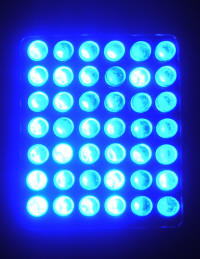Community Supported Amplifiers
Thursday, April 1st, 2010Many of you have probably heard of “Community Supported Agriculture” – some of you may even belong to one. If so, good for you! CSA’s are an excellent way to form a closer relationship between you and the source of your food. CSA’s are growing at a tremendous rate as consumers slowly learn the downsides of intensive farming practices, GMO’s, etc.

CSA members receive instruction prior to helping on the farm
Along a similar vein, I would like to introduce you to the concept of “Community Supported Amplifiers”. Much like a traditional vegetable or fruit CSA, the members pay for the season in advance. If the harvest is good that year, both the amplifier farmer and the members benefit. If the harvest is poor that year, the farmer still gets the financial support he desparately needs.

A sun-ripened amplifier awaits harvesting by CSA members
Even though the amplifiers lining your hi-fi shop’s shelves look good, they are anything but good – owing to the non-sustainable large-scale practices employed. With Community Supported Amplifiers you get the benefit of a relationship with the farmer who provides you with your amplifiers, as well as the knowledge that the amplifiers not only look good, but sound good too – due to sustainable small-scale organic practices.

An amplifier farmer holding a freshly harvested HMA-1000
Growing amplifiers is much more challenging than one might at first realize! There are obvious considerations such as sunlight, soil pH and moisture, but if you want to grow a truly remarkable amplifier, one also grown in an environmentally sustainable manner, then you must consider the following:
- Seed quality is essential. Use non-GMO seeds from a reputable supplier and start indoors four weeks before the growing season beings in your zone.
- A flat frequency response usually means a well-maintained trellis system. Any uneven growth will show up in the amplifier’s frequency response plots.
- For high power class-D amplifiers it is essential to generously amend the soil with a natural iron-rich fertilizer to ward off late season “magnetics blight”.
- High power means plenty of good silicon for power devices – don’t skimp on the silicon! Natural sources include sand and old Dell Dimension computers.
- A cool-running amplifier requires a cool growing climate. A nearby lake will prevent early blooming and subsequent frost damage. Webster NY is ideal.
- A natural distortion profile means plenty of natural materials. A well-maintained compost heap of all of your organic amplifier scraps will help with this.
- A relative of the Colorado potato beetle, the Nevada amplifier beetle, can infest amplifier fields. Cornell researchers are looking into natural predators.
If you do not already belong to an amplifier CSA, then please consider joining one! Bringing the amplifier farmer and the audiophile closer together results in sonic benefits that simply cannot be realized with the intensive farming practices that typify mass-produced amplifiers. With an amplifier CSA you will always know that you are listening to the goodness of the earth, the sun, and the farmer’s heart.

Give back to your community – support your local amplifier farmer!
P.S. April Fool’s! 🙂



